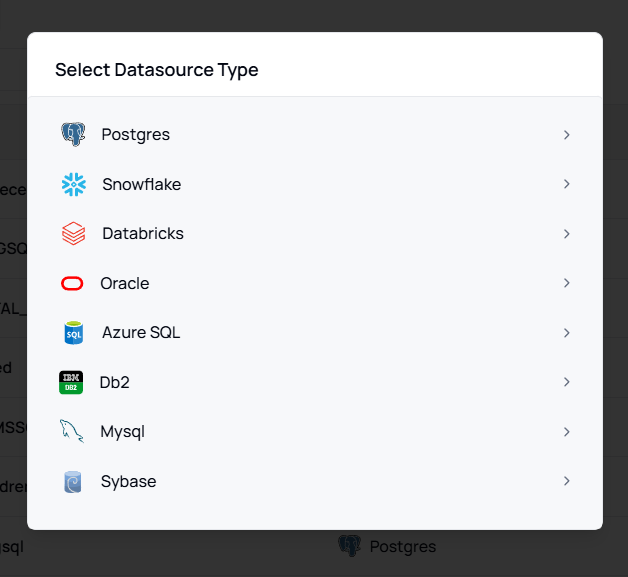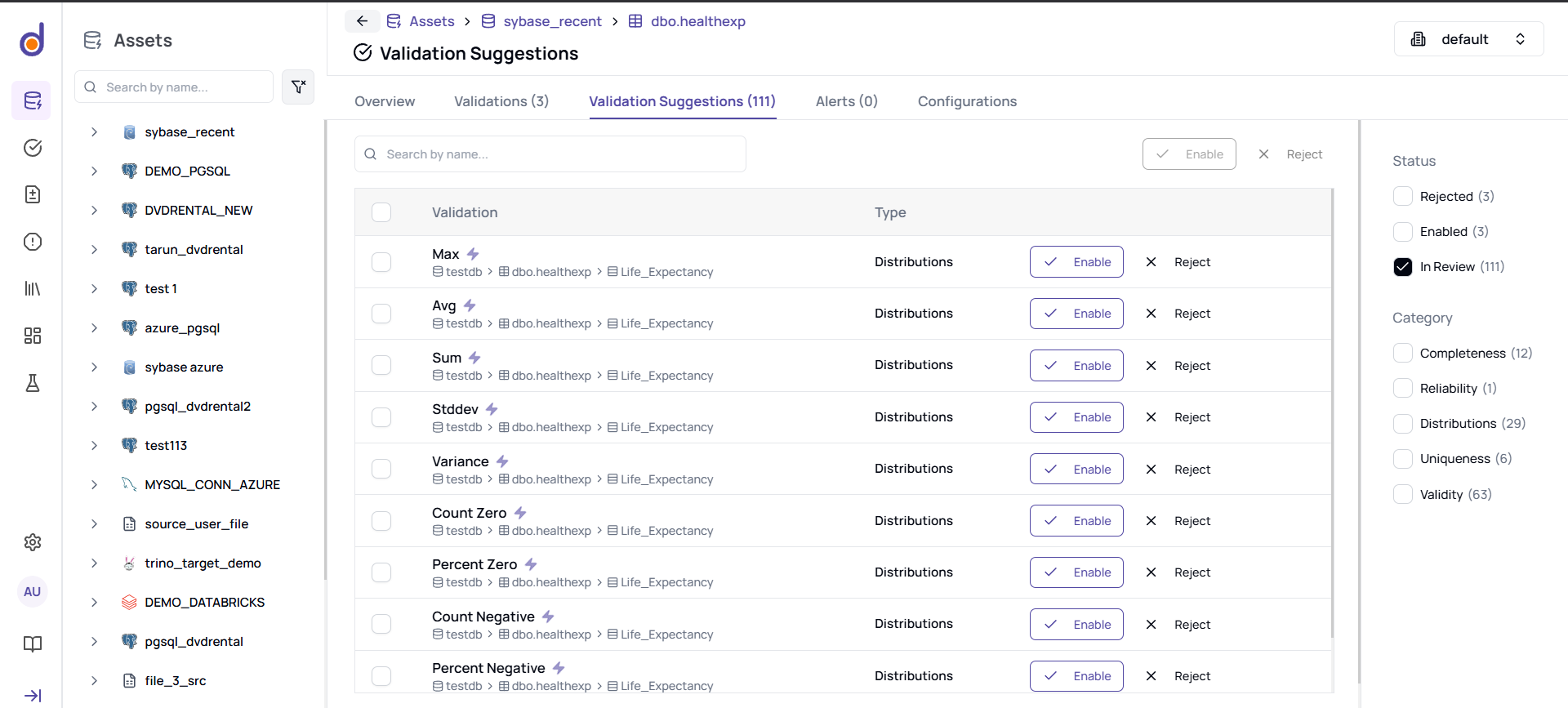Getting Started
Datachecks helps you tp ensure data accuracy, reliability, and health with minimal and quick setup.
Overview
- Connect your data source(s) quickly and securely
- Add a Data Source to the Workspace for Better Analysis and Collaboration
- Get validation suggestions for instant insights into your most critical data assets
- Get critical alerts to resolve data problems before they impact your business
- Create Collections to organize and streamline alerts for better management and faster issue resolution
1. Connect to your data source(s) quickly and securely
To add a new data source, go to Settings > Integrations. Then, navigate to Datasources and click New Datasource. You can choose a data source of your choice from the list.
Note: Only admin users can add new data sources.

2. Add Data Source to the Workspace
Once your data source is connected, it will be added to the platform but not to your workspace. To link a specific data source to your workspace, go to Settings > Workspaces > Datasources.
After linking, Datachecks will automatically scan your data and suggest validations to ensure data accuracy and reliability.
3. Get Validations Suggestions
Validation suggestions are automatically generated for all new datasets added to Datachecks. You can view these suggestions in Assets when accessing a data source, schema, or table by navigating to Validation Suggestions.
You can search or use filters to find relevant validations. You can enable or reject recommended validation one by one, or bulk enable them by selecting the checkbox in the validation table header.

4. Monitor Alerts
When a validation detects values outside the expected threshold, an alert is triggered and sent to your configured notification channel. You can view all alerts from the Collections section or the Alerts tab, depending on what is relevant to you.
You can filter alerts by status, data source, and validations. You can acknowledge alerts, mark them as incidents, or investigate them to track issue resolution.
5. Create Collections
Collections allow you to group related validations for easier management. For example, you can create a collection to monitor critical data pipelines or specific business metrics.
To add a validation to a collection, select Validation from Assets, check the checkbox next to the relevant validation, and click Add to Collections
Updated 5 months ago
